- Home
- Services
- IVY
- Portfolio
- Blogs
- About Us
- Contact Us
- Sun-Tue (9:00 am-7.00 pm)
- infoaploxn@gmail.com
- +91 656 786 53
Selecting the right state management solution is vital when building complex, large-scale Flutter applications. Among the many available options, Riverpod and Bloc stand out as two of the most powerful and widely adopted libraries. This article compares the two, helping you decide which one best fits your project needs—especially when scaling up.
State management refers to how an app handles and updates its state—the data that influences UI behavior and structure. While simple apps may manage state effortlessly, growing complexity requires a more structured and robust solution to ensure maintainability and scalability.
Riverpod is a robust and modern state management solution, designed as a complete rewrite of the Provider package by its original author. It supports a functional programming approach and offers strong compile-time safety.
Best For: Developers who prioritize testability, flexibility, and a streamlined API for managing state.
Bloc (Business Logic Component) is a state management library based on reactive programming principles. It enforces a strict separation of UI and business logic, encouraging a highly structured architecture.
Best For: Teams that favor consistency, architectural discipline, and clear boundaries between layers of the app.
Riverpod has a moderate learning curve, making it approachable for developers familiar with provider-like patterns or functional programming concepts. In contrast, Bloc often presents a steeper learning curve, especially for newcomers, due to its reliance on event-driven architecture and state transitions.
One of Riverpod’s strengths is its minimal boilerplate. Developers can get started quickly with concise syntax and straightforward configuration. Bloc, however, tends to involve more boilerplate, particularly when implementing complex state flows or following strict architectural patterns.
Both Riverpod and Bloc score excellent in terms of testability. Their separation of concerns and clear state management logic make them well-suited for unit and widget testing, giving teams confidence in maintaining scalable codebases.
In terms of performance, both libraries are highly optimized. Riverpod’s fine-grained reactivity and lazy evaluation ensure efficient rebuilds, while Bloc’s well-defined event-to-state flow and predictable updates offer consistent, performant behavior even in large apps.
Riverpod’s ecosystem is rapidly growing, with strong community support and increasing adoption in the Flutter space. Bloc, on the other hand, boasts a mature and well-established ecosystem, with years of real-world usage and robust extensions like flutterbloc, hydratedbloc, and community plugins.
Bloc provides excellent tooling support, notably through tools like Bloc DevTools, which allow developers to inspect, debug, and time-travel through states during development. Riverpod also has good tooling, including support in IDEs and the riverpoddevtools, though it is still catching up in terms of visualization and inspection capabilities.
Riverpod offers built-in async support using AsyncValue, which simplifies the management of loading, error, and data states in a unified way. Bloc handles asynchronous logic through event-to-state mapping, requiring developers to explicitly map events to resulting states, which can offer more control but requires additional boilerplate.
With Riverpod, code generation is optional. It supports advanced use cases through annotations and build runners (like riverpodgenerator), but these are not mandatory for core functionality. In contrast, Bloc often recommends code generation, especially when using libraries like hydratedbloc or freezed to manage complex states and reduce repetitive code.
If your team has prior experience with Bloc or reactive programming, continuing with Bloc might offer immediate productivity gains. On the other hand, Riverpod offers a more beginner-friendly entry point.
Bloc shines in projects with intricate business logic and numerous dependencies. Riverpod, with its flexible and modular approach, may be better suited for apps that evolve quickly or require granular control over state.
Riverpod often results in faster development due to its concise syntax and minimal boilerplate. Bloc may require more setup but rewards that investment with long-term maintainability and consistency in large teams.
Both Riverpod and Bloc are powerful tools for managing state in Flutter applications. The best choice depends on your team’s expertise, your project’s complexity, and your priorities around development speed and architecture.
Ultimately, success lies in choosing the right tool for your specific context—and using it effectively.
Happy coding!
Imagine reducing your operational costs by up to $100,000 annually without compromising on the technology you rely on. Through our partnerships with leading cloud and technology providers like AWS (Amazon Web Services), Google Cloud Platform (GCP), Microsoft Azure, and Nvidia Inception, we can help you secure up to $25,000 in credits over two years (subject to approval).
These credits can cover essential server fees and offer additional perks, such as:
By leveraging these credits, you can significantly optimize your operational expenses. Whether you're a startup or a growing business, the savings from these partnerships ranging from $5,000 to $100,000 annually can make a huge difference in scaling your business efficiently.
The approval process requires company registration and meeting specific requirements, but we provide full support to guide you through every step. Start saving on your cloud infrastructure today and unlock the full potential of your business.

